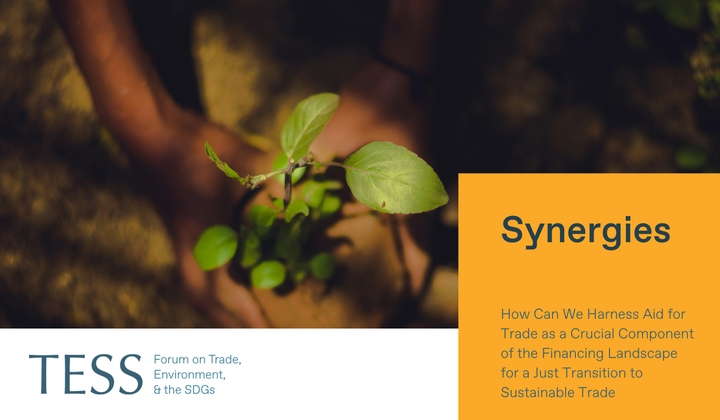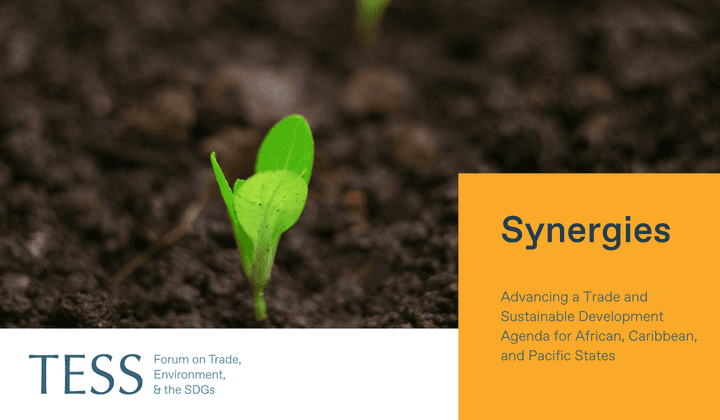Tragically, the United States is moving ahead to raise trade costs and tax some of the most economically vulnerable economies in the world—all in the name of its own national emergency. The use by the US of Security Exceptions (GATT Article XXI) is now longstanding, which means some of the “Liberation Day” policy announcements came as no surprise. But the targeting of least developed countries (LDCs) and small island developing states (SIDS) in view of a purported national emergency in the US—compared to extreme economic and increasing environmental vulnerability in LDCs and SIDS—shows just how far the moral compass of the US has swung: away from international cooperation, towards coercion and now, callousness. The reciprocal tariff methodology has the wrong premise of considering that a “fair” tariff would drive bilateral trade deficits to zero, ignoring elements such as the market size. By using this methodology it is no coincidence that the countries facing the highest “reciprocal tariffs” are LDCs.

What Are the Reciprocal Tariffs?
On the 2 April 2025, the Trump administration declared a national emergency to increase competitive edge, alongside national and economic security. A new reciprocal tariff policy was announced based on perceptions (and misunderstandings) of trade imbalances. As detailed in the Executive Order, the reciprocal tariffs imposed by the United States comprise of supplementary ad valorem duties to be paid in addition to existing duties. All countries are subject to a 10% additional duty, except the countries listed in Annex I, which have a country-specific rate instead of the general 10%. Annex I reciprocal tariffs include, for example, Lesotho at 50%, Cambodia at 49%, and Bangladesh at 37%. Countries like members of the European Union (EU) face a rate of 20% on top of most-favored-nation (MFN) rates, even though when trade in services are considered the reported trade deficit with the US more than halves.
However, the reciprocal tariffs are conceived to drive bilateral trade deficits in goods to zero. The rates are calculated by dividing the US bilateral trade balance by the US total imports of the trading partner (then dividing the result by 2 to get the “discounted” tariff). Such a methodology has already been deemed ineffective for Trump’s intended objectives of economic security and the overall logic questioned in view of the investment-services-intellectual property nexus of value chain expansion and global position of US firms. But the potential development effects are seriously concerning, potentially raising trade costs to prohibitive levels and curtailing export-orientated growth for economies highly dependent on products destined for the US market.
The Exposure of Least Developed Countries to Reciprocal Tariffs
Looking at the direct effects, the table below identifies every least developed country (LDC) and small island developing state (SIDS) with a reciprocal tariff greater than 10% alongside their exposure to the US market. The estimated increase in trade costs is high for Lesotho and Madagascar because under the African Growth and Opportunity Act, textiles and apparel products faced rates of between 0.1-8.8% (whilst most products were duty free on MFN basis). The effects are going to be devastating for Lesotho. But it is also extremely important to underscore why the reciprocal tariff is so high for Lesotho. The reciprocal tariff methodology has the wrong premise of considering that a “fair” tariff would drive bilateral trade deficits to zero, ignoring elements such as the market size. By using this methodology it is no coincidence that the countries facing the highest “reciprocal tariffs” are small LDCs.
LDC Exposure to Reciprocal Tariffs

* The rest of LDCs are: Afghanistan, Benin, Burkina Faso, Burundi, Central African Republic, Comoros, Djibouti, Eritrea, Ethiopia, Gambia, Guinea, Guinea-Bissau, Haiti, Kiribati, Liberia, Mali, Mauritania, Nepal, Niger, Rwanda, Senegal, Sierra Leone, Solomon Islands, Somalia, South Sudan, Sudan, Timor-Leste, Togo, Tuvalu, Uganda, United Republic of Tanzania, Yemen.
Source: Reciprocal Tariffs Executive Order (2025), UN Comtrade, WITS.
Cambodia’s forthcoming graduation from LDC status (scheduled for 2029) may be in jeopardy given potential for devastating impacts on the textiles and clothing global value chain arising from a 49% reciprocal tariff rate. As in the case of Lesotho and Cambodia, the sector mainly employs women and has supported poverty reduction efforts over years. Myanmar has similarly entered the textiles and clothing global value in recent years, expanded formal employment opportunities for women, and reduced poverty. However, it too faces potentially devastating increases in trade costs—coming at a time when a natural disaster has already wrought economic devastation. One of the most climate vulnerable economies in the world—Bangladesh—faces major risks from a reciprocal tariff of 37% on garment exports to the US. The devastating impact of trade cost increases is likely to strengthen calls to postpone graduation from LDC status, currently scheduled for 2026.
The reciprocal tariff regime will unleash new trade diversion, because of the relative differences in tariffs applied between countries, but direct and more immediate effects are likely to be passed through the value chain because of the nature of typically hierarchical relationships between producers and buyers. These are the lessons that have been learned since Covid-19, as well as the 2008 global financial crisis. To adapt to these challenges, in the case of Cambodia, a diplomacy drive with the US is being pursued, alongside continued efforts to diversify markets towards the EU, Canada, and other markets within the Association of South East Asian Nations (ASEAN)—reports suggest that since access to the US Generalized System of Preferences was lost in 2020, the sector has proven its ability to maintain competitiveness despite tariff increases. But there is still a huge difference between the current applied MFN rates of between 12–17% that would be imposed in addition to the 49% reciprocal rate, which could increase tariffs overall to 66%. This is a similar situation to Bangladesh, although the level of exposure to the US is reduced given the greater economic reliance on the EU and other markets. Business appears to be lobbying the government to engage with the US to reduce the rates, given competitiveness concerns and the movement of the footloose industry to neighbours that face lower tariffs (including India)

Internationally Recognized Economic Vulnerabilities
With parallels to a global social safety net, the UN Committee for Development Policy has since the 1970s periodically reviewed indicators across countries related to economic and environmental vulnerability, human development, and income levels. The LDCs are a UN-recognized category and this provides a mandate for dedicated international support, which has been recognized by WTO members’ application of special and differential treatment. Over time, the review process, the indicators, and the provision of support have been refined. But the principle of targeted support for extremely economically vulnerable economies has been maintained. More recently, in view of the climate emergency, SIDS have pushed hard for greater recognition of their inherent structural vulnerabilities as reflected in the UN’s multidimensional vulnerability index, as well as within the WTO given the 2024 Ministerial Decision reaffirming commitment to the Work Programme on Small Economies.
However, just as the Trump administration has denounced the UN Sustainable Development Goals, the reciprocal tariffs now denigrate the WTOs trade-related international support architecture and penalize LDCs in view of their inherent structural vulnerabilities. That the US is now seeking to exacerbate the economic vulnerabilities of others, to redress its own failure to reform the post-war global economic architecture to adapt to globalization, is especially tragic. Paradoxically, though, the concept of development is just as relevant to the US now as it is to other parts of the world. This is summarized nicely by Dani Rodrik who quotes Sir Arthur Lewis and refers to the challenge of economic dualism faced by the US. These challenges are not unrelated to the failures of neoliberalism and the now recognized failures to effectively govern and manage the effects of the globalization, especially agglomeration effects.
The rest of the world must do all it can to cushion the blow and avoid retaliation. Planned cutbacks in aid must be rethought. There are clear demands to support trade facilitation efforts, the capacity to respond, and the ability to diversify and reduce exposure to a deeply unfair, illogical, and cruel 21st century US tariff policy. For economically vulnerable economies, the potential crushing of economic engines through the prohibitive increases in trade costs is coming on top of the cut of $40 billion a year in US international development assistance. It also comes on top of the costs of loss and damage and climate change adaptation, reductions in grant-based assistance, the effects of geopolitical tensions, ongoing disaster recovery efforts in LDCs such as Myanmar, a devastating conflict in Sudan, and the list goes on.
The international community has a moral duty to respond. One starting point is to ensure capacity within LDCs to respond, including through the Enhanced Integrated Framework. All WTO members should review their own preferential rates applied to LDCs and SIDS and how they could adapt to shoulder the blow of market losses in the US. There are clear demands to support trade facilitation efforts, the capacity to respond, and the ability to diversify. The boosting of aid for trade resources must be prioritized by donors to support export diversification efforts, alongside the deepening of South-South and other regional production networks, especially within the African Continental Free Trade Area.
----------
Jodie Keane is Senior Research Fellow, Bernardo Arce is Research Officer, and Prachi Agarwal is Research Fellow at ODI Global.
-----
Synergies by TESS is a blog dedicated to promoting inclusive policy dialogue at the intersection of trade, environment, and sustainable development, drawing on perspectives from a range of experts from around the globe. The editor is Fabrice Lehmann.
Disclaimer
Any views and opinions expressed on Synergies are those of the author(s) and do not necessarily reflect those of TESS or any of its partner organizations or funders.
License
All of the content on Synergies is licensed under a Creative Commons Attribution-NonCommercial-ShareAlike 4.0 International (CC BY-NC-SA 4.0)
license. This means you are welcome to adapt, copy, and share it on your
platforms with attribution to the source and author(s), but not for
commercial purposes. You must also share it under the same CC BY-NC-SA
4.0 license.
If you would like to reuse any material published here or if you have any other question related to Synergies, send an email to fabrice.lehmann@graduateinstitute.ch.






